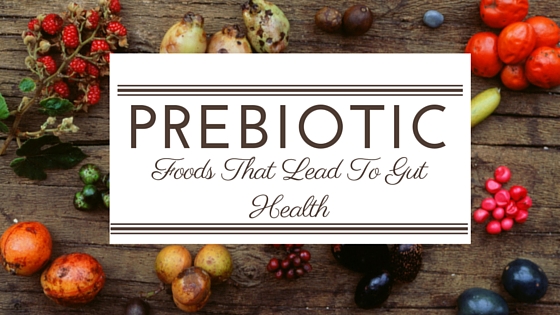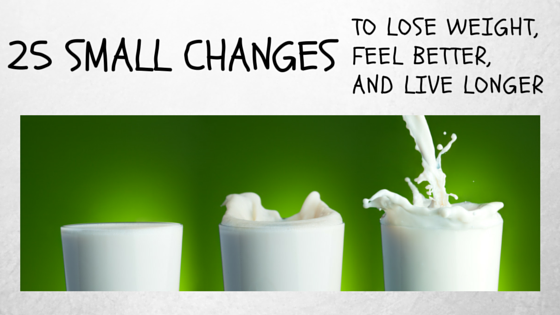Soluble VS insoluble fiber is an age old war. These two beasts of the fiber world are still battling it out for domination in the world of food. You may ask “but why do I care?” Or maybe even “Why do YOU (as in the writer of this article) care so much!?” All of this will be answered and more, and by the end of this post my hope is that you will be able to spot an insoluble fiber food or a soluble fiber from miles away.
The Good News
The best things about this war is that you are winning as long as you are in it. Whether you choose to eat soluble or insoluble fiber it doesn’t matter, as long as you are indeed eating fiber! Being able to figure out which foods contain which part of fiber is indeed important, but you are already gaining ground by choosing to eat more fiber! Good for you!
Dietary Fiber
Dietary fiber is an umbrella term for both insoluble and soluble fibers. Dietary fiber is what is found most often on food labels and often isn’t broken down into the two different parts. This can make it hard to tell which foods have which kind fiber unless you have the knowledge before hand.
Soluble Fiber
Throw some water at this fiber and it will dissolve and form a viscous liquid or a gel. This fiber is definitely not the Wicked Witch of the West, and it also wouldn’t be very good out on a real battlefield. Any enemy that can be destroyed easily by water is not one that is going to last very long in a war! However, in all seriousness, soluble fiber is a fiber powerhouse when it comes to combating symptoms of IBS (irritable bowel syndrome), and it is a great addition to your diet.
Some examples of soluble fiber foods are as follows:
- Oatmeal
- Fruits such as bananas or papayas
- Sweet Potatoes and Yams
- Rice
Soluble fiber is a key component to an awesome high fiber diet! Snacking on these types of foods will be sure to alleviate symptoms of IBS and keep your entire digestive system happy and working fluidly. To see a list of the top 20 soluble fiber foods see the table below.
| Food Item | Food Type | Serving | Total Fiber | Soluble Fiber |
|---|---|---|---|---|
| Flax Seed | Seeds | 1 cup | 25.5 | 13.8 |
| Beans, soybeans, roasted | Legume | 1 cup | 30.4 | 13.7 |
| Poppy seeds | Seeds | 1 cup | 12.7 | 11.3 |
| All-Bran Buds (Kellogg's) | Cereal | 1 cup | 39.0 | 11.0 |
| Amaranth, dry | Grain | 1 cup | 30.0 | 10.0 |
| Pear, dried, cooked, unsweetened | Fruit | 1 cup | 16.3 | 8.8 |
| Sorghum | Vegetable | 1 cup | 26.5 | 8.0 |
| Figs, dried, uncooked | Fruit | 1 cup | 24.3 | 8.0 |
| Flour, soy, defatted | Flour | 1 cup | 17.5 | 7.9 |
| Barley, dry | Grain | 1 cup | 31.0 | 7.0 |
| Beans, Lima, cooked dry | Legume | 1 cup | 13.2 | 7.0 |
| Bran, Oat Bran, dry | Bran | 1 cup | 14.5 | 6.8 |
| Prune | Fruit | 1 cup | 12.1 | 6.5 |
| Sprouts, acorn, cooked | Vegetable | 1 cup | 10.8 | 6.2 |
| Peach, dried | Fruit | 1 cup | 13.1 | 6.1 |
| Beans, kidney, cooked dry | Legume | 1 cup | 11.4 | 5.7 |
| Flour, soy, low-fat | Flour | 1 cup | 9.0 | 5.5 |
| Pear, dried | Fruit | 1 cup | 13.5 | 5.4 |
| Flour, potato | Flour | 1 cup | 9.4 | 5.1 |
| Teff, dry | Grain | 1 cup | 26.7 | 5.0 |
Insoluble Fiber
This type of fiber is key to your diet as it has a laxative effect on your digestion and will help you to avoid constipation. This keeps things going in your system because this type of fiber does not dissolve in water and will help you to become more “regular.” Wholes grains and vegetables hold the most insoluble fibers and you can see some of the major insoluble fiber foods listed below:
- Whole wheat, whole grains and corn bran
- Nuts and seeds
- Zucchini, broccoli, tomatoes, carrots, cucumbers
- Raisins, grapes, and fruits
Insoluble fiber is the obvious choice for your dietary needs. Marching into battle with these fibrous troops would surely win victory for you and your goals. They are powerfully and continually working their way through the gastrointestinal battlefield and letting nothing stop them. To know where else to find these foods see the following table of the top 20 insoluble fiber foods.
| Food Item | Food Type | Serving | Total Fiber | Insoluble Fiber |
|---|---|---|---|---|
| Bran, Corn, dry | Bran | 1 cup | 63.2 | 61.2 |
| Coconut, fresh | Fruit/Nut | 1 Medium | 35.7 | 31.8 |
| All-Bran Buds (Kellogg's) | Cereal | 1 cup | 39.0 | 28.0 |
| Fiber One (General Mills) | Cereal | 1 cup | 27.9 | 26.6 |
| Barley, dry | Grain | 1 cup | 31.0 | 24.0 |
| Bran, wheat (unprocessed) | Bran | 1 cup | 24.8 | 22.9 |
| Bran (Nabisco) 100% | Bran | 1 cup | 24.8 | 22.4 |
| Teff, dry | Grain | 1 cup | 26.7 | 21.7 |
| Bran, Rice, dry | Bran | 1 cup | 24.8 | 21.6 |
| Bulgur, dry | Unknown | 1 cup | 25.6 | 21.3 |
| Amaranth, dry | Grain | 1 cup | 30.0 | 20.0 |
| Sorghum | Vegetable | 1 cup | 26.5 | 18.5 |
| All-Bran (Kellogg's) | Cereal | 1 cup | 20.0 | 18.0 |
| All-Bran (Kellogg's) | Cereal | 1 cup | 20.0 | 18.0 |
| Beans, soybeans, roasted | Legume | 1 cup | 30.4 | 16.7 |
| Figs, dried, uncooked | Fruit | 1 cup | 24.3 | 16.3 |
| Flour, triticale, whole grain | Flour | 1 cup | 19.0 | 15.5 |
| Pea (green) undiluted | Vegetable | 1 cup | 17.6 | 15.2 |
| Buckwheat groats, dry | Unknown | 1 cup | 16.9 | 14.6 |
| Lentils, cooked from dried | Legume | 1 cup | 15.6 | 14.4 |
However, nobody wants to eat broccoli for dinner every night! There are other options for those that are choosing fiber that fall into the soluble fiber category. For more information on the other side of the war see below!
What Does This Mean For Me?
First of all, as I have stated before, adding fiber to your diet is definitely step number one. Deciding which fiber to include is a distant second. As long as you are getting your required Daily Fiber amount each day you should be good to go. This is easier said than done however, as most people don’t get anywhere near the daily amount that is doctor recommended. In actuality most people only get Half The Recommended Daily Amount!
Follow the guidelines in This Handy Chart to be able to really see the benefits from a high fiber diet.
So Which One Should I Choose!? Soluble VS insoluble Fiber? Which One!?
Of course the obvious answer is both. If you are getting each of these fibers into your diet you are bound to see results. However, there are several reasons why you might want to choose one type of fiber over the other.
If you are suffering from symptoms of IBS you might want to focus on getting more soluble fiber into your diet. This will boost your bodies ability to handle the food you are eating and calm the intensity in which your colon has to work! If you are having major issues with constipation, insoluble fiber might be the way to go as it will keep things moving along nicely.
 Either way, make sure you consult a doctor if you are having serious issues with your digestive system. They might be able to point you in the correct direction to best suit your needs. Additionaly, make sure you are drinking enough WATER. I feel as if I am beating a dead horse with this, and if you have read some of my other blog posts you would probably agreed with me, but It is worth mentioning over and over again! Water is the quintessential part of making the high fiber diet work for you! So make sure you are drinking enough!
Either way, make sure you consult a doctor if you are having serious issues with your digestive system. They might be able to point you in the correct direction to best suit your needs. Additionaly, make sure you are drinking enough WATER. I feel as if I am beating a dead horse with this, and if you have read some of my other blog posts you would probably agreed with me, but It is worth mentioning over and over again! Water is the quintessential part of making the high fiber diet work for you! So make sure you are drinking enough!
See How Much Water You Should Drink Per Day.
Final Thoughts
Thank you so much for reading and for learning more about soluble and insoluble fibers! For more information and to be continually connected to your Fiber Guardian please Follow Me On Twitter! I post several updates a day and it is my goal to give you some awesome topics to not only think about, but to be able to take some real action in order to make a difference in your life!
For more see this post on Health Ambition.
Have a great day and remember to keep pushing each day. Rome wasn’t built in a day and neither was your body. Stay strong and make the changes necessary to live the best life that you can!
-Jordan






Recent Comments